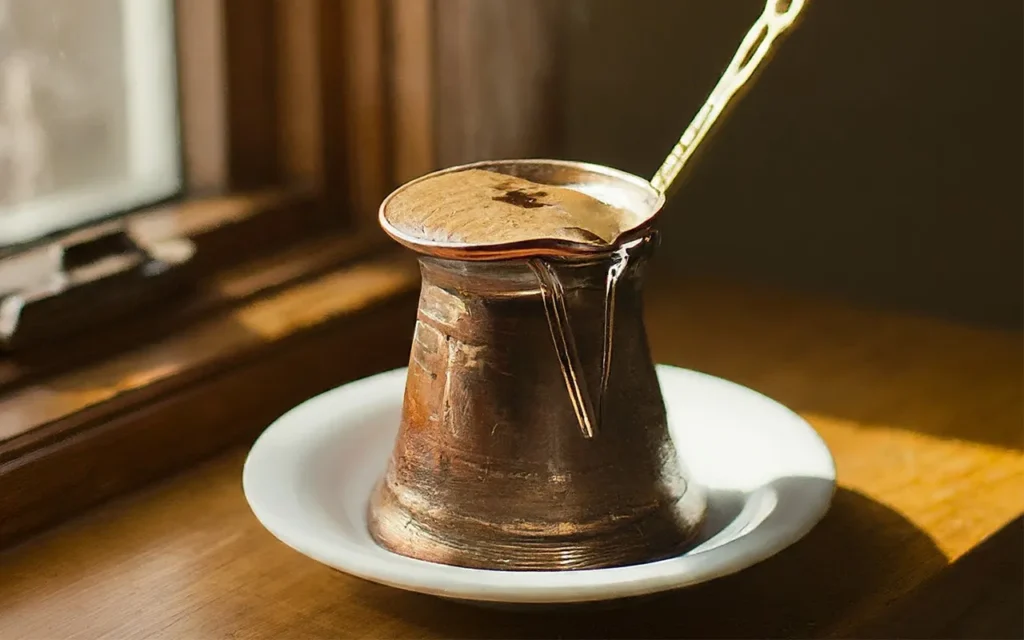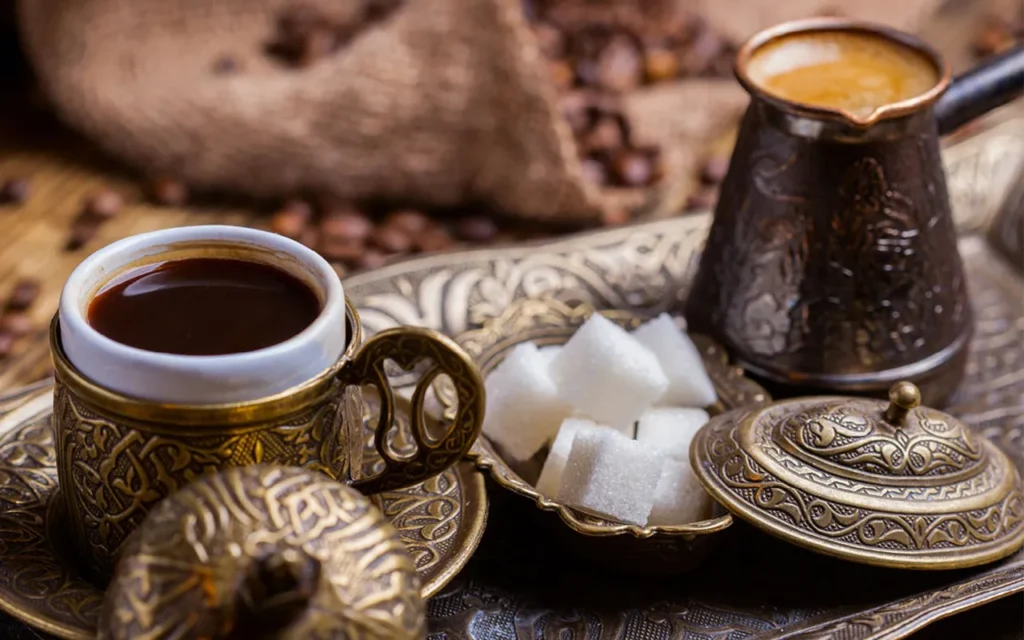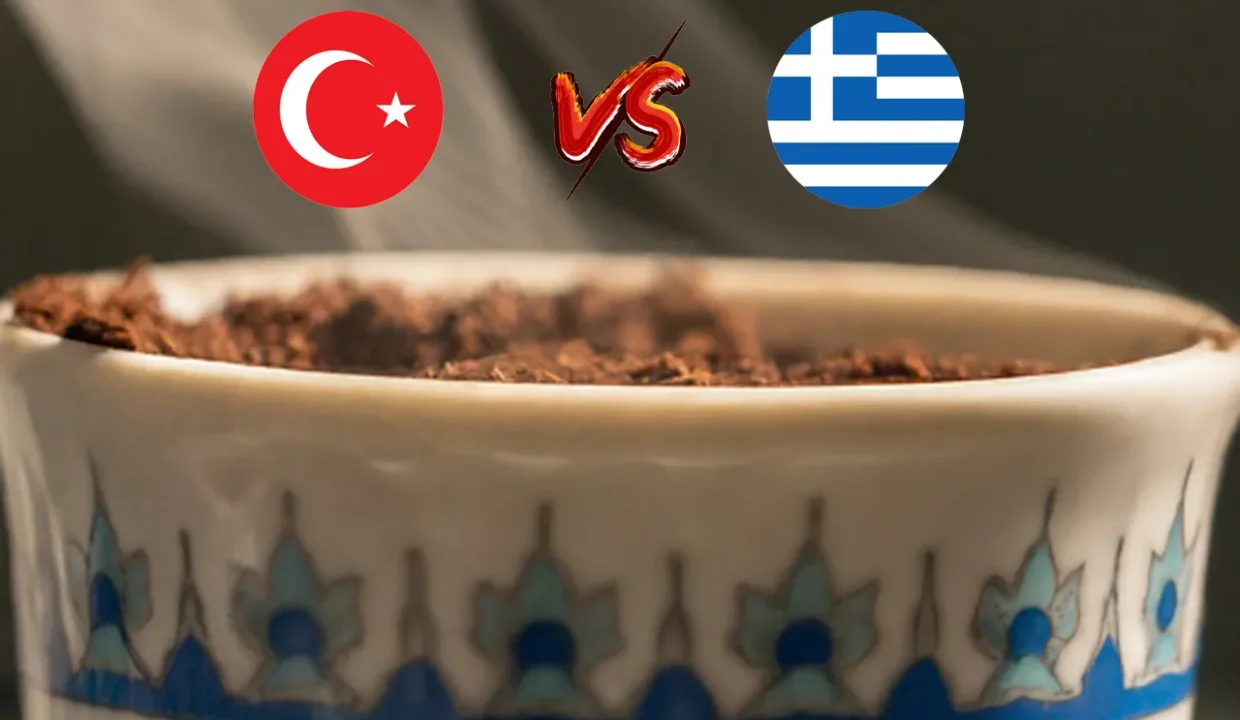Greek vs Turkish Coffee: A Cultural and Culinary Comparison
Coffee is more than just a beverage; it’s a cultural cornerstone in many countries around the world. This is particularly true in Greece and Turkey, where coffee plays an integral role in daily life and social rituals. While Greek and Turkish coffee share many similarities due to their geographical and historical connections, there are also distinct differences that set them apart. This article explores the nuances between Greek and Turkish coffee, delving into their origins, preparation methods, flavor profiles, and cultural significance.
While Greek and Turkish coffee share a common heritage and similar preparation methods, they each possess unique characteristics that reflect their respective cultures. Turkish coffee is known for its strong, robust flavor and thick texture, while Greek coffee is noted for its aromatic, balanced taste and smooth finish. Both coffees play significant roles in their cultures, symbolizing hospitality, tradition, and social connection. Whether you prefer the intense richness of Turkish coffee or the aromatic complexity of Greek coffee, both offer a delightful and culturally enriching experience.
Historical Origins

Turkish Coffee
The origins of Turkish coffee can be traced back to the Ottoman Empire in the 16th century. Legend has it that coffee was first introduced to Istanbul by traders from Yemen. The beverage quickly gained popularity among the elite and eventually spread throughout the empire. Turkish coffee houses, known as “kahvehane,” became social hubs where people gathered to discuss politics, literature, and business. The art of preparing and serving Turkish coffee was refined over centuries, becoming an essential part of Turkish culture and hospitality.
Greek Coffee
Greek coffee, known locally as “ellinikos kafes,” has a similar historical trajectory. It was introduced to Greece during the Ottoman occupation, which lasted for several centuries. The method of brewing coffee was adopted and adapted by the Greeks, becoming a staple of Greek daily life. Despite the shared history, Greek coffee has developed its own unique identity and cultural significance. Today, it is enjoyed in both traditional and modern settings, from small village cafes to bustling urban coffee shops.
Preparation Methods

Turkish Coffee Preparation
The preparation of Turkish coffee is an art form that requires precision and patience. It begins with finely ground coffee, which has a texture similar to powdered sugar. The coffee is traditionally brewed in a small pot called a “cezve” (pronounced jezz-veh), which is typically made of copper or brass. Here are the steps to prepare Turkish coffee:
- Ingredients: Combine cold water, coffee grounds, and sugar (if desired) in the cezve. The ratio is usually one teaspoon of coffee per cup of water. Sugar is added according to preference: “sade” (no sugar), “az şekerli” (a little sugar), “orta şekerli” (medium sugar), or “çok şekerli” (very sweet).
- Mixing: Stir the mixture thoroughly before placing the cezve on low heat.
- Brewing: Heat the mixture slowly, allowing it to foam but not boil. As the coffee begins to foam, remove it from the heat and let the foam settle. Repeat this process two or three times to enhance the flavor.
- Serving: Pour the coffee into small, handleless cups, ensuring that each cup receives a share of the foam. Allow the grounds to settle before drinking.
Greek Coffee Preparation
The preparation of Greek coffee is remarkably similar to Turkish coffee, with a few minor differences. Greek coffee is also brewed using finely ground coffee and a small pot called a “briki.” The steps are as follows:
- Ingredients: Combine cold water, coffee grounds, and sugar (if desired) in the briki. The ratio and sugar levels are similar to those used in Turkish coffee.
- Mixing: Stir the mixture thoroughly before placing the briki on low heat.
- Brewing: Heat the mixture slowly, allowing it to foam but not boil. As the coffee begins to foam, remove it from the heat and let the foam settle. This process is typically repeated once or twice.
- Serving: Pour the coffee into small, handleless cups, ensuring that each cup receives a share of the foam. Allow the grounds to settle before drinking.
Flavor Profiles

Turkish Coffee Flavor
Turkish coffee is known for its strong, robust flavor and thick, velvety texture. The brewing method and the use of finely ground coffee create a rich, intense taste. The foam on top, known as “köpük,” adds a creamy layer that enhances the overall experience. Turkish coffee is often described as having earthy, nutty notes with a hint of bitterness, especially when no sugar is added. The addition of sugar can balance the bitterness and bring out sweeter, more caramel-like flavors.
Greek Coffee Flavor
Greek coffee shares many of the same flavor characteristics as Turkish coffee, but there are subtle differences. Greek coffee tends to be slightly less intense and more aromatic, with a smoother finish. The foam, or “kaimaki,” is an essential element, adding a creamy texture and enhancing the flavor. Greek coffee is often noted for its balanced taste, with a harmonious blend of bitterness and sweetness, depending on the amount of sugar used. The overall flavor profile is rich and complex, with hints of chocolate and spice.
Cultural Significance

Turkish Coffee Culture
Turkish coffee is deeply embedded in the social fabric of Turkish life. It is often enjoyed in leisurely settings, accompanied by conversation and hospitality. Serving Turkish coffee to guests is a traditional gesture of welcome and respect. The preparation and serving of the coffee are often ritualistic, emphasizing the importance of tradition and community. Additionally, Turkish coffee is associated with fortune-telling, known as “fal.” After drinking the coffee, the cup is turned upside down on the saucer, and the patterns formed by the grounds are interpreted to predict the drinker’s future.
Greek Coffee Culture
Greek coffee holds a similarly esteemed place in Greek culture. It is a symbol of hospitality and is often served to visitors as a sign of respect and friendship. Greek coffee is typically enjoyed slowly, in a relaxed atmosphere, often accompanied by lively conversation. Traditional Greek cafes, known as “kafeneio,” are communal spaces where people gather to socialize, play backgammon, and discuss various topics. The ritual of drinking Greek coffee fosters a sense of community and connection, reflecting the Greek emphasis on social bonds and hospitality.


